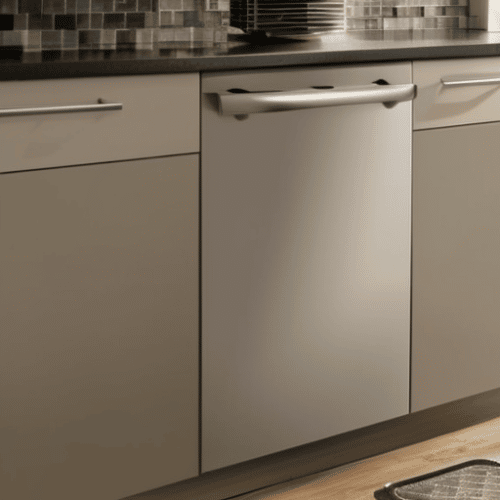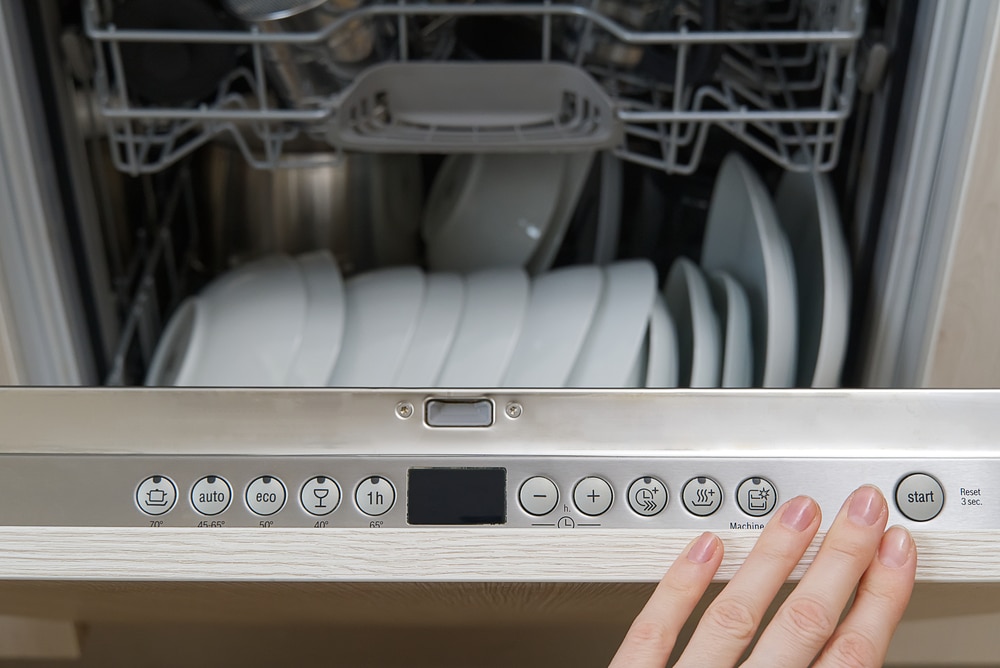Last Updated on
If you’ve ever tried to remove an integrated dishwasher, then you know that it can be a daunting task. It’s not as simple as unplugging the appliance and pushing it out of your kitchen; there are several steps involved in safely removing this device from its location. In this blog post, we’ll explain how to remove an integrated dishwasher quickly and easily without any hassle – no tools or prior knowledge required. From gathering the right tools for removal to cleaning up after taking out the dishwasher, we have all the tips you need for successful disassembly. So read on if you’re ready to take on this challenge.
Table of Contents:
- Gather the Right Tools
- Disconnect the Water Supply
- Unscrew the Dishwasher
- Lift Out the Dishwasher
- Clean Up After Removal
- Conclusion
Gather the Right Tools
Removing an integrated dishwasher can be a daunting task, but with the right tools it doesn’t have to be. To start, you’ll need a screwdriver and an adjustable wrench. A Phillips head screwdriver is best for this job as it will allow you to loosen and remove any screws that may be holding the dishwasher in place. An adjustable wrench is also necessary so that you can disconnect any hoses or pipes connected to the appliance.
Next, pliers are essential when removing an integrated dishwasher. Pliers will help you grip nuts and bolts while unscrewing them from their position on the appliance. You may also need a pair of needle-nose pliers if there are hard-to-reach areas that require more precision when loosening parts from your dishwasher.
Finally, having some extra hands around could come in handy for lifting out the heavy unit once disconnected from its base cabinet or countertop installation area – just make sure everyone wears protective gloves. With these simple steps in mind, gathering up the right tools should ensure safe and successful removal of your integrated dishwasher. Now, it’s time to disconnect the water supply for the removal of your integrated dishwasher.
Disconnect the Water Supply
Once you have gathered the necessary tools, turn off the main water valve in your home. This can usually be found near where the main water line enters your house. It is important to shut off this valve before attempting to disconnect anything else.
Next, locate both hoses connected to your dishwasher and use a pair of pliers or an adjustable wrench to loosen them from their respective connections on either side of the appliance. Once they are loose enough for removal, place one end into a bucket or bowl so that any remaining water can drain out safely without making a mess on your floor or countertop.
Finally, unscrew each hose completely from its connection point until it is free from the appliance entirely and set aside for later disposal if needed. Do not forget about these two pieces as they will be essential when reconnecting everything once installation has been completed.
Once the water supply is disconnected, it’s time to unscrew the dishwasher from its housing to remove it.
Unscrew the Dishwasher
When it comes to unscrewing the dishwasher, it’s important to make sure you have all the right tools. A Phillips head screwdriver and a pair of pliers should do the trick. Start by disconnecting any electrical connections that may be attached to your dishwasher. This could include power cords or water supply lines. Once these are disconnected, you can begin unscrewing the mounting brackets from either side of your appliance. Make sure not to overtighten as this could damage both the bracket and the machine itself.
Finally, once all screws have been removed, lift up on one side of the top panel until it pops off from its frame entirely; this will give you access underneath where all other components are located for further removal later on if necessary.
Once you have successfully unscrewed the dishwasher, it’s time to lift it out and take the next step in your project.
Lift Out the Dishwasher

Lifting out a dishwasher can be an intimidating task, but with the right tools and some careful planning it doesn’t have to be. Before you begin, make sure you have all the necessary tools on hand: a flathead screwdriver, adjustable wrench or pliers, and a pair of heavy-duty gloves.
With two people present, donning heavy-duty gloves to protect against injury, carefully tilt the dishwasher back until it can be safely lifted up and away from its original installation location. Ensure that any items nearby are moved out of the way so they do not get scratched or damaged in the process.
Once lifted completely free from its original spot in place within seconds after following these steps correctly, go ahead and clean up whatever mess may have been left behind after removal. Sweep away dirt and dust particles scattered across floors and counters, wipe down surfaces with a damp cloth, dispose of old parts removed during the process appropriately, etcetera.
Once the dishwasher has been safely removed, it’s time to get down to cleaning up the area around where it was installed. With a few simple steps, you’ll be ready for the next step in your home renovation project: cleaning up after removal.
Clean Up After Removal
To ensure that you don’t leave behind any debris, it is important to clean up after the removal process. Here are some tips for cleaning up after removing your integrated dishwasher:
Wipe Down Surfaces:
After you have disconnected and unscrewed the dishwasher, wipe down all surfaces with a damp cloth or paper towel. This will help remove any dust and dirt that may have been left behind during the removal process. Make sure to pay special attention to areas around the sink where water may have splashed onto counters or walls during disconnection of hoses and pipes.
Vacuum Up Debris:
Vacuuming up any debris left on floors or in crevices is essential for proper cleanup after removing an integrated dishwasher. Pay close attention to the corners and edges of cabinets as these tend to collect dust particles over time which can easily be vacuumed away with a handheld vacuum cleaner or broom attachment if necessary. Be sure not to forget about baseboards too.
Clean Out Hose Connections:
If there were hose connections used when disconnecting your integrated dishwasher, make sure they are cleaned out before storing them away for future use. A simple solution of warm water mixed with a mild detergent should do the trick here; just make sure all soap residue has been thoroughly rinsed off before re-connecting them later on down the line.
Remove Any Adhesive Residue:
When removing an integrated dishwasher from its cabinet space, adhesive residue may remain stuck on surfaces such as countertops or walls depending on how long it had been installed prior to removal day – so don’t forget about this step. Use a soft cloth soaked in warm water mixed with mild detergent followed by rubbing alcohol (for stubborn residues) until all traces of glue are gone from surfaces near where your old appliance once stood proudly.
Conclusion
Learning how to remove an integrated dishwasher is not as difficult as it may seem. With the right tools and a bit of patience, you can easily remove your old dishwasher in no time. Once you have disconnected the water supply, unscrewed the dishwasher, and lifted it out of its place, all that’s left to do is clean up after removal. By following these simple steps, you can successfully remove an integrated dishwasher with ease.
Paul is the type of person who never met a problem he couldn’t fix. He can always be found tinkering with something in his house, even if it isn’t broken! His tips and tricks are often shared on our site. He’s the one you call when something breaks because he has been known to improvise fixes for everything from leaky faucets to malfunctioning dryers.



